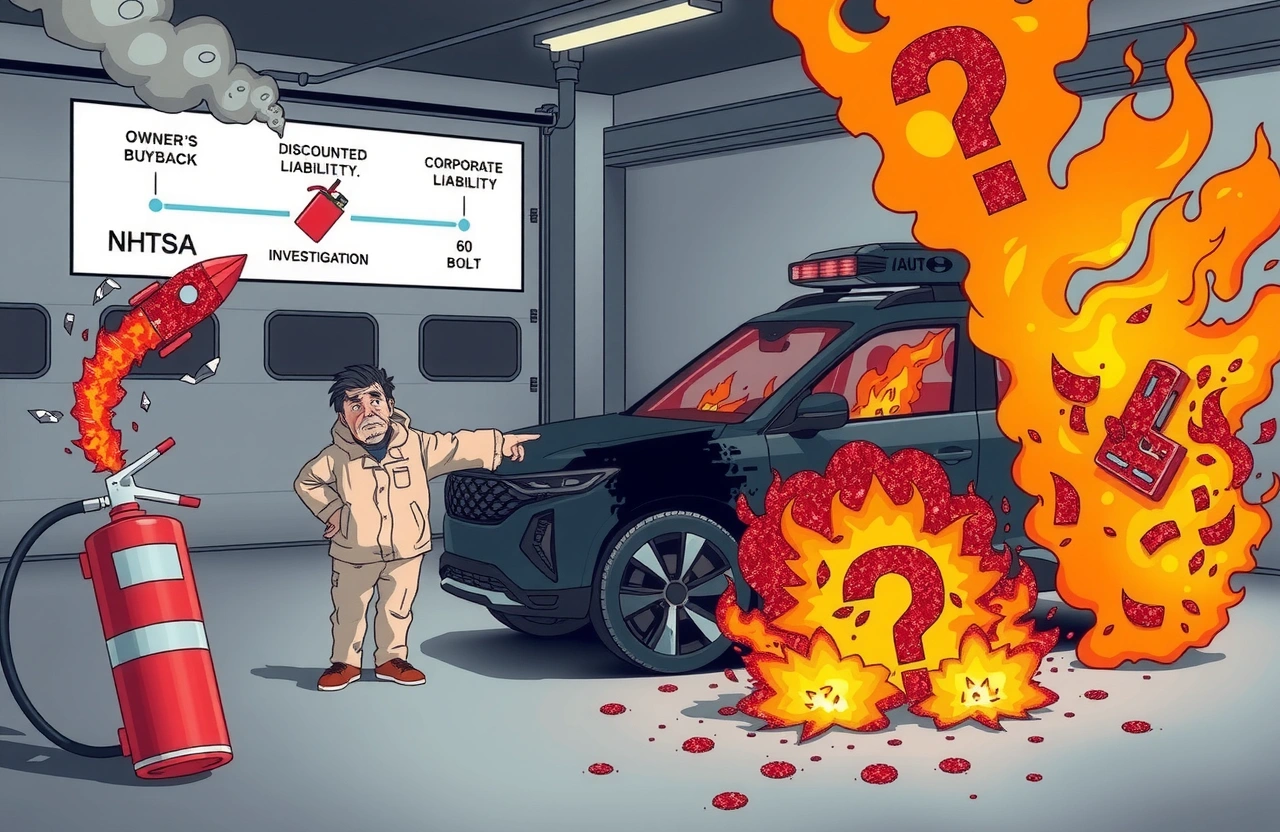A Garage Turned Inferno: Customer Nightmare Unfolds
A Li Auto MEGA driver remains shaken after witnessing his half-million-yuan ($70k) electric SUV erupt in flames inside his residential garage. The Beijing resident described heart-stopping moments: “While driving back alone after buying fruits, my car suddenly caught fire…flames engulfed the vehicle within seconds.” Remarkably escaping unharmed, the owner immediately contacted Li Auto, expecting prompt answers about this spontaneous combustion incident affecting their premium flagship model. Instead, he encountered corporate delays and demands to wait months for answers about this increasingly concerning spontaneous combustion incident.
Key facts emerging:
– First-ever documented fire involving Li Auto’s flagship MEGA model
– Vehicle worth ¥529,800–559,800 completely destroyed
– Owner escaped miraculously without injury
– Corporate investigation timeline stretched to 60+ days
The Incident Timeline: Contradictory Narratives
Owner Account vs Corporate Findings
According to social media posts verified by Phoenix Finance, the incident occurred during routine morning errands. “The flames shot toward the ceiling,” the owner stated, emphasizing the intensity of this spontaneous combustion incident. Li Auto representatives confirmed they dispatched a Beijing-based engineering team but offered conflicting findings: investigators discovered a burnt lighter remnant above the driver’s seat rail and an intact lighter nearby. Their official statement noted: “Seat position adjustment data shows movement immediately prior to ignition.”
Damning Physical Evidence
The investigation revealed critical damage patterns implying an external heat source:
– Severe melting concentrated near right-side controls
– Refrigerator compartment wiring completely charred
– Center console wiring remained intact without discoloration
The owner countered corporate conclusions: “With flames originating right beside me, how could lighters end up lodged above—not in—seat rails? Li Auto hasn’t explained that mystery satisfactorily.”
Corporate Response Failures
The Silence Treatment
Nearly two weeks after the spontaneous combustion incident, the frustrated customer reports radio silence: “Unless I initiate contact, nobody from Li Auto follows up.” His explicit requests for written forensic analysis and simulation experiments remain unanswered. Rather than addressing safety concerns, company representatives offered to repurchase the destroyed vehicle “at significantly discounted rates” without discussing root causes–a proposal the owner considers insulting given the spontaneous combustion incident’s unresolved nature.
Safety Claims Under Scrutiny
The spontaneous combustion incident directly contradicts public assurances from Li Auto’s product leadership. Just weeks before the fire, executives touted their safety record: “Over 1.3 million delivered vehicles without battery self-ignition incidents” (Li Xiang via Weibo, June 2025). This spontaneous combustion incident marks the MEGA model’s first major safety failure since its late-2024 launch.
Engineering Vulnerabilities
Potential risk factors surrounding this spontaneous combustion incident deserve scrutiny:
– High-voltage architecture near driver controls
– Known thermal challenges with refrigerator systems
– Charging system proximity to flammable material
Electric Vehicle Fire Statistics
*Spontaneous combustion incidents* remain exceptionally rare but attract disproportionate attention:
– EVs 0.3% fire likelihood vs ICE vehicles 1.5% (NFPA 2024)
– Chinese NEV fire rate: 1.6 per billion miles vs USA 25 per billion miles
– Limited data on premium EVs like ¥500k+ segment
Path Toward Resolution
For owners navigating potential spontaneous combustion incident cases:
1. Secure vehicle independently via tow truck
2. Document scene immediately with timestamped photos
3. File official fire department report
4. Retain legal counsel before corporate meetings
Transparency As Industry Imperative
When spontaneous combustion incidents occur, EV manufacturers face defining moments. Li Auto’s handling of this spontaneous combustion incident reveals systemic weaknesses:
Crisis Management Breakdown
Corporate missteps include:
– Slow evidence disclosure timeline
– Offering buybacks before diagnostics
– Insufficient communication protocols
Global Industry Precedents
Responsive manufacturers demonstrate best practices:
– GM’s 48-hour Bolt EV fire investigations
– NIO’s public live-streamed battery immersions
– Tesla’s crowd-sourced fire statistics reporting
Rebuilding Trust After Flames Subside
This spontaneous combustion incident presents critical questions requiring transparent answers before any resolution for both parties. As owners continue paying loans on incinerated premium EVs while awaiting corporate accountability, manufacturers demonstrate technological maturity through:
– Expedited forensic reporting
– Collaborative third-party validation
– Public disclosure protocols
Li Auto must confront these challenges directly. Consumers investing over ¥500k in premium mobility solutions deserve unambiguous truths when catastrophic failures occur—not procedural delays and deflection tactics. Until comprehensive root cause analyses emerge regarding this spontaneous combustion incident, public confidence remains compromised.



